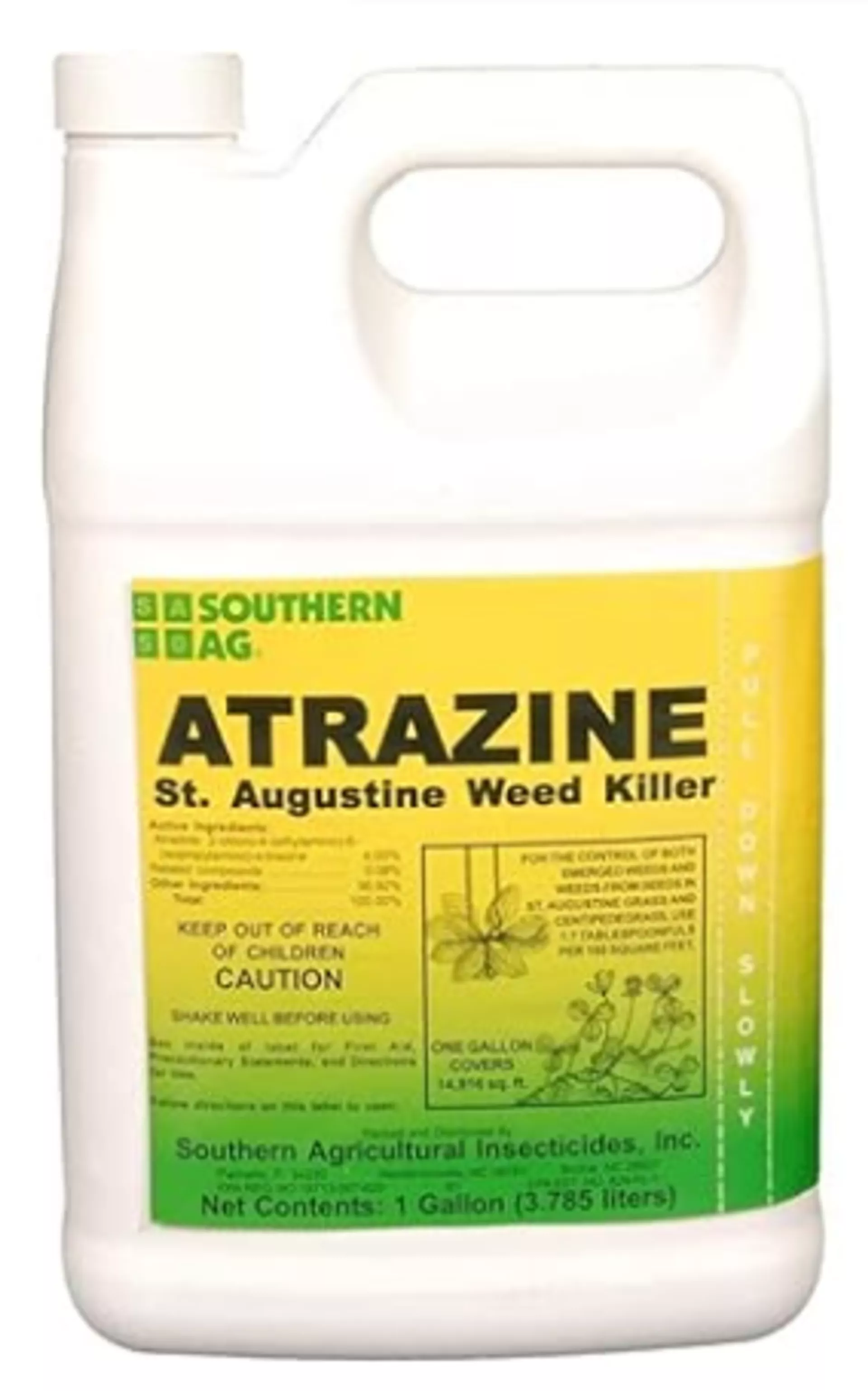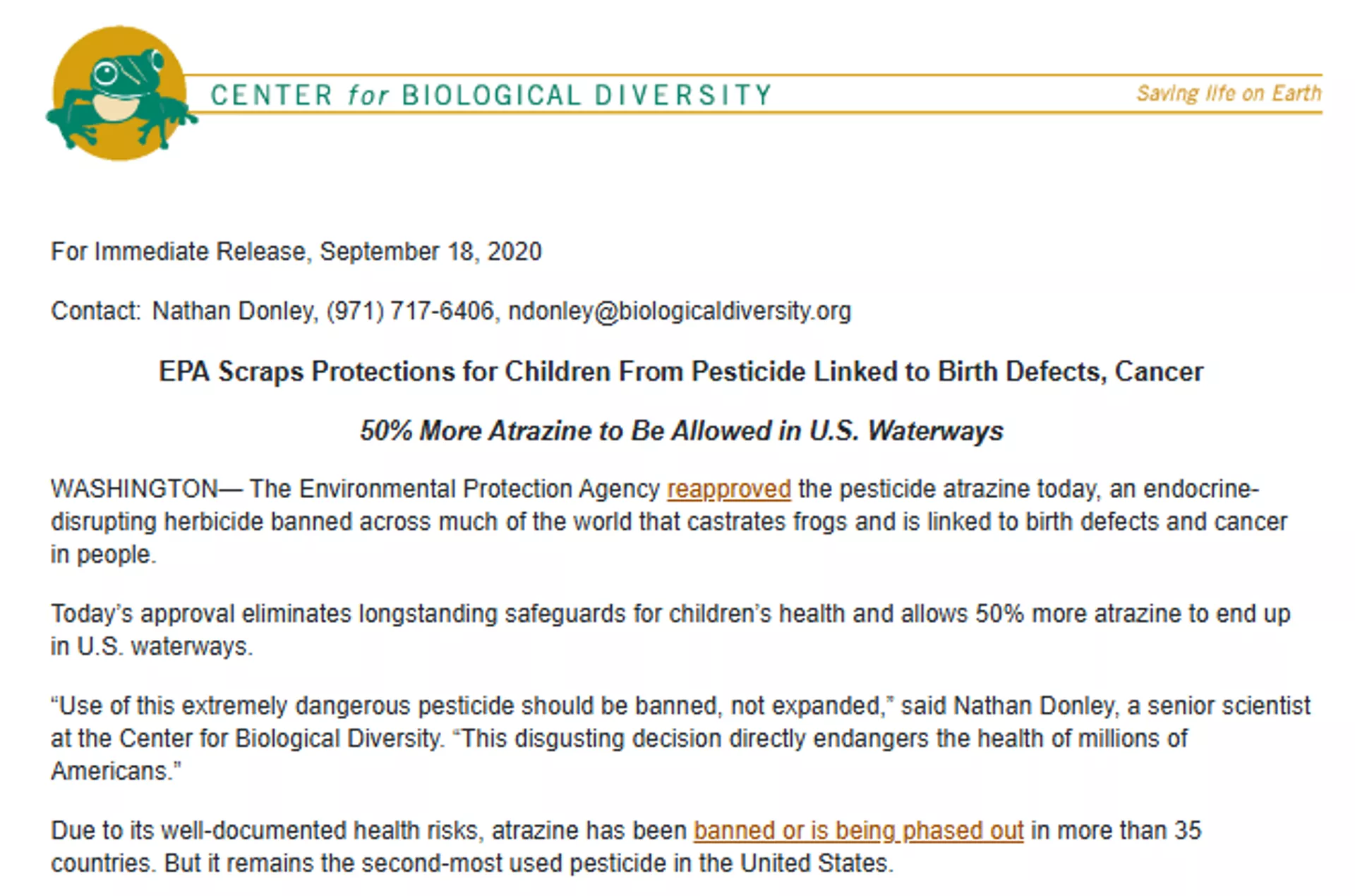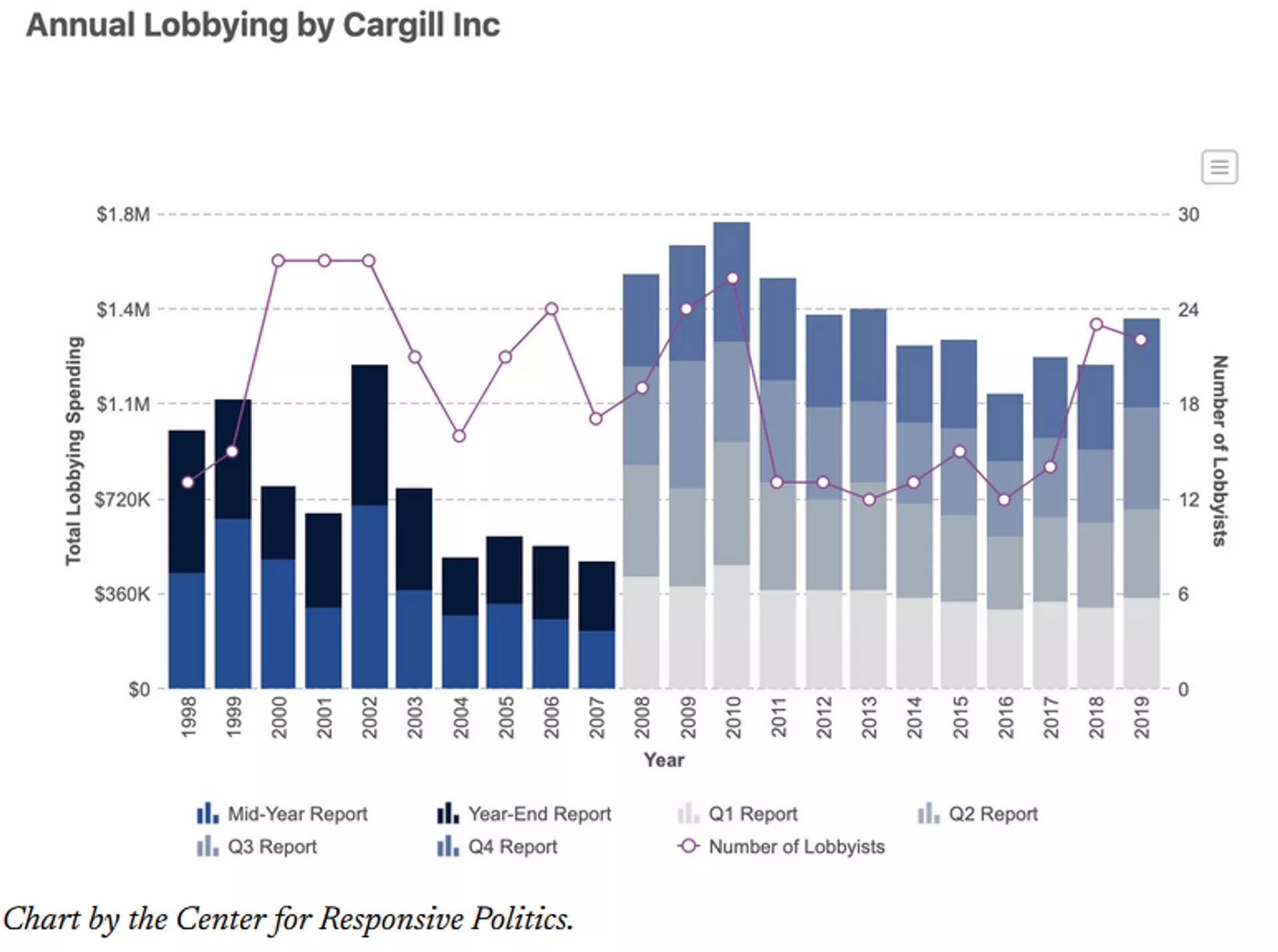Registered initially in 1958 by CIBA-GEIGY, atrazine has been a major agricultural herbicide in the US for more than 30 years. Manufactured by Swiss-based agrochemical giant Syngenta, it is a chlorinated triazine systemic herbicide.
Pesticide products containing atrazine are registered for use on “field corn, sweet corn, sorghum, and sugarcane, wheat, macadamia nuts, and guava, as well as non-agricultural uses such as nursery/ornamental and turf.” Around 80 million pounds (over 36 million kilograms) of atrazine are applied annually in the US.
What’s Wrong with Atrazine?
The compound’s “chemical properties make it susceptible to leaching and runoff, especially during heavy rains,” according to the US Department of Agriculture (USDA). Atrazine lingers in soil for months, or years in some types of soil, and can reach groundwater through runoff, research carried out by German scientists and published in Springer Nature in 2010 showed.
A study published in 2014 in the journal Water Research found that in Germany, “even 20 years after the ban of atrazine, the groundwater concentrations of sampled [observation wells] remain on a level close to the threshold value of 0.1 μg l−1 without any considerable decrease.”
Around 30 million Americans in 28 states have some level of atrazine in their drinking water, a report by the Environmental Working Group revealed in 2018.
© PhotoScreenshot showing container of weed killer atrazine.

Screenshot showing container of weed killer atrazine.
© Photo
Is It Dangerous for Humans?
Short answer: YES.
Atrazine (ATR) can cause tumors, breast, ovarian, and uterine cancers, as well as leukemia and lymphoma, a study of Kentucky counties in 1997 published in EHP Publishing and Chinese research featured in ScienceDirect in 2023 revealed.
There was a “statistically significant increase in breast cancer risk with medium and high levels of triazine exposure,” researchers at the University of Kentucky College of Medicine concluded in 1997.
Atrazine can increase proliferation rate of prostate tumor cells, according to research featured in ScienceDirect in 2023.
Atrazine exposure causes birth defects, including choanal atresia, stenosis, gastroschisis, and more. US researchers found that “higher county levels of atrazine were associated with infant diagnoses of gastroschisis,” a rare birth defect where an opening in the newborn’s abdomen wall causes the intestines to spill outside the body, according to US research published in JAMA Network in 2024.
Children of mothers with high levels of exposure to atrazine “had nearly a two-fold increase in risk for choanal atresia or stenosis,” which lead to life-threatening respiratory symptoms, said a Texas study published by the National Library of Medicine in 2014.
Endocrine disruption, interrupting regular hormone function, irregular estrogen levels and menstrual cycles, decreased sperm count in men, abnormal birth weight and unexplained infertility are all linked to the compound, as substantiated by international studies, findings of which were laid out in the International Journal of Ecosystem in 2011, and in a paper by Canada's Bureau of Reproductive and Child Health.
Atrazine may cause renal failure, US research titled “Pesticide use and risk of end-stage renal disease among licensed pesticide applicators in the Agricultural Health Study” published by the National Library of Medicine in 2016 revealed.
Neurotoxic effects of atrazine “align with pathological characteristics in Parkinson’s disease,” and studies support “a strong evidence base that low-concentration ATZ exposure during development can elicit increased risk of neurodegeneration,” a January 2024 study published in ScienceDirect showed.
© Photo : Center for Biological DiversityScreenshot of publication on reapproval of atrazine by US EPA in 2020.

Screenshot of publication on reapproval of atrazine by US EPA in 2020.
© Photo : Center for Biological Diversity
Despite the overwhelming science linking atrazine use to severe illness, the US EPA reapproved atrazine in 2020 for another 15 years.
The International Agency for Research on Cancer (IARC) has determined that atrazine is not classifiable as to its carcinogenicity to humans, allowing its continued use with new requirements.
Why Was It Reapproved & Who Lobbied For Atrazine?
The United States Department of Agriculture (USDA) openly acknowledges in its September 1994 economic research report that banning atrazine would impose “costs on farmers and consumers” ranging between “$517 million and $665 million.”
US agrochemicals giant Monsanto (acquired by Germany’s Bayer in 2018) also had a finger in the pie. While not a primary manufacturer of atrazine, its flagship product, Roundup, contains the toxic weed killer ingredient glyphosate. Monsanto invested $4.6 million to influence agricultural policy and pesticide regulations in 2016, per the nonprofit OpenSecrets.
Monsanto coordinated its lobbying strategies at the national, EU, and international levels with atrazine-maker Syngenta, according to Corporate Europe Observatory (CEO). Ex-Monsanto staff got powerful positions in government, while scientists were paid to act as mouthpieces, CEO claimed. During the US EPA review of atrazine in 2003, industry lobbyists reportedly participated in numerous closed-door meetings with EPA regulators.
The American Farm Bureau Federation (AFBF) is entwined financially with large agribusiness corporations. Its insurance affiliates have bought stock in companies like the US multinational food corporation Cargill, The Nation wrote in 2012. Cargill Inc. has spent $1,060,000 lobbying in 2024.
© Photo : Center for Responsive PoliticsScreenshot showing annual lobbying by Cargill Inc.

Screenshot showing annual lobbying by Cargill Inc.
© Photo : Center for Responsive Politics
Farm groups including the American Farm Bureau Federation, National Corn Growers Association, and Agricultural Retailers Association, along with state farm bureaus and grower groups and the National Association of State Departments of Agriculture, filed comments with the EPA in 2022 urging to refrain from restricting the use of atrazine. They argued that this would "prove devastating for hundreds of thousands of American agricultural producers."
From 2005 to 2010, ten leading agribusiness interests spent $127 million lobbying Congress and federal agencies, fielding 159 lobbyists in 2010, with Monsanto and the American Farm Bureau leading the pack, a report by Environment Maryland in 2012 showed.
Syngenta spent $260,000 lobbying the Environmental Protection Agency and other government officials, an Associated Press review of disclosure forms showed in 2004.
The EPA, tethered to the interests of the pesticide industry, has since recalculated the level of concern for atrazine as 9.7 µg/L measured as a 60-day average (July 2024) following a peer review. Its cumulative health risk assessment on atrazine “found no risks of concern when evaluating all dietary exposure sources including drinking water.”

 4 months ago
39
4 months ago
39







 We deliver critical software at unparalleled value and speed to help your business thrive
We deliver critical software at unparalleled value and speed to help your business thrive






 English (US) ·
English (US) ·